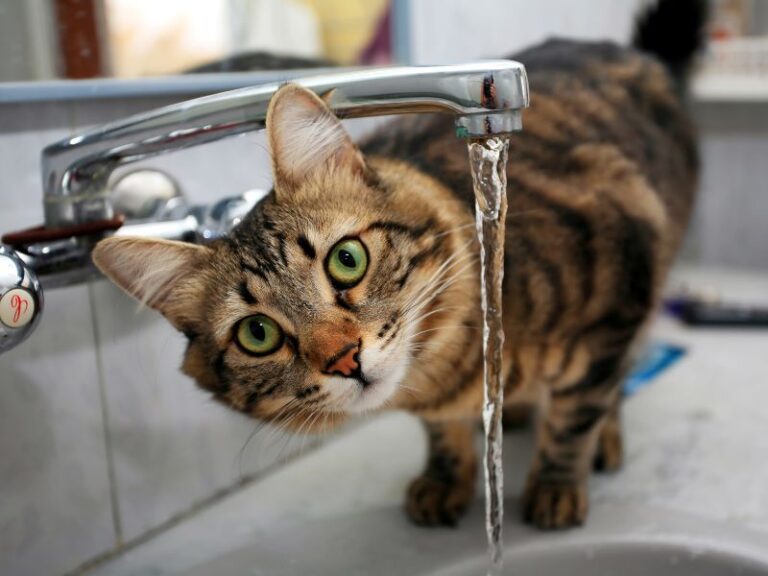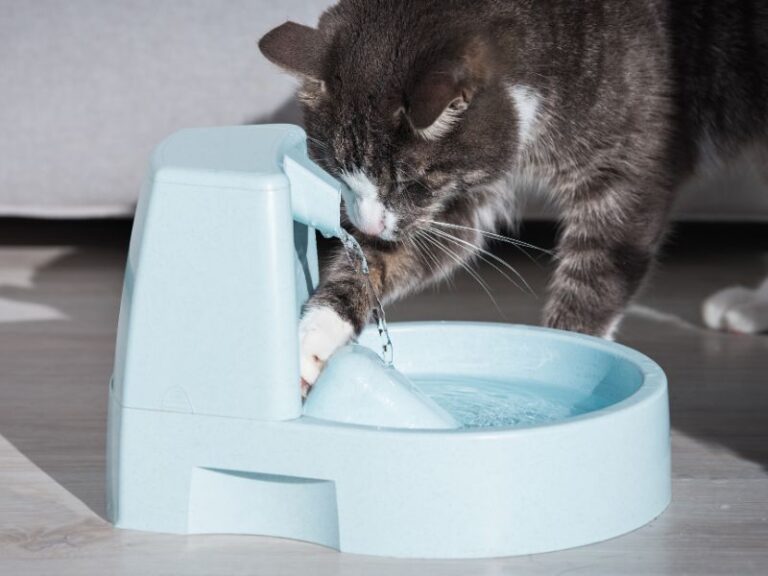Table of Contents
ToggleMicrochipping your cat is an essential step in ensuring its safety and well-being. Our feline friends are curious explorers, and while their adventurous spirit is endearing, it can sometimes lead them astray. A cat microchip is a small, passive device that plays a significant role in reuniting lost cats with their worried owners. In this section, we will explore the importance of microchipping your cat, understand what a microchip cat is, and learn how these tiny devices aid in reuniting lost feline companions with their families.
Importance of Microchipping Your Cat
Cats, by nature, are independent creatures, and even the most responsible pet owners may find it challenging to keep tabs on their furry friends at all times. The unfortunate reality is that cats can go missing for various reasons, such as getting startled by loud noises or unfamiliar environments. Unlike collars and tags, which can be lost or removed, microchips provide a permanent form of identification that increases the chances of a lost cat finding its way back home.
Microchipping your cat is a proactive and responsible approach to pet ownership. It demonstrates your commitment to the well-being of your feline companion and ensures that you are well-prepared in case they go missing. Many pet owners have experienced the heartache of losing a beloved cat and not being able to locate them. Microchips offer a lifeline in such situations, providing hope and a higher likelihood of a happy reunion.
The Role of Microchips in Reuniting Lost Cats
Microchips serve as a crucial link between a lost cat and its owner. When a lost or stray cat is found and brought to a shelter or veterinary clinic, the first step is often to scan for a microchip. If a microchip cat is detected, the shelter or clinic staff can then access the contact information registered to that microchip and promptly reach out to the cat’s owner.
This quick and efficient identification process significantly increases the chances of reuniting lost cats with their families. In fact, studies have shown that microchipped cats are more than twice as likely to be returned to their owners compared to cats without microchips.
By opting to microchip your cat, you are providing them with an extra layer of protection and ensuring that, even in the face of unforeseen circumstances, you have a higher chance of being joyfully reunited with your beloved furry companion.
Understanding Microchip Cat
How Cat Microchips Work
Microchip cat operate on Radio Frequency Identification (RFID) technology. Each microchip contains a unique identification number that is associated with your contact information in a national pet registry database. When a microchip cat scanner is passed over the area where the microchip is implanted, it emits a low-frequency radio signal that activates the microchip. The microchip then transmits its unique identification number back to the scanner, which displays the number on the screen.
This identification number is vital in reuniting lost cats with their owners. Once the microchip number is obtained, animal shelters, veterinary clinics, or other authorized facilities can access the registry database and retrieve the owner’s contact details. It is crucial to keep this information up to date in the database to ensure a successful reunion in case your cat goes missing.
Types of Microchips Available
- RFID Microchips: RFID microchips are the most common type used for cat identification. They do not contain any internal power source or moving parts, making them small, lightweight, and safe for cats of all sizes. These microchips are passive devices that remain inert until activated by an external microchip scanner. The lack of a power source ensures that the microchip has a long lifespan, typically lasting for the lifetime of the cat.
- GPS-Enabled Microchips: While traditional RFID microchips serve as permanent identification, some pet owners opt for GPS-enabled microchips for an added layer of security. GPS microchips use Global Positioning System (GPS) technology to track your cat’s location in real-time. These microchips require a power source, usually a small battery, to function. The GPS data is transmitted to a compatible device or smartphone, allowing you to monitor your cat’s whereabouts more actively.
Microchip Size and Placement
Cat microchips are incredibly small, typically measuring about 11-13 millimeters in length and 2 millimeters in diameter. The small size ensures that the implantation process is safe, minimally invasive, and relatively painless for your feline companion.
The microchip is usually implanted between the shoulder blades, just beneath the skin, using a syringe-like applicator. This area is chosen because it is easily accessible and ensures that the microchip stays in place and remains scannable. Once implanted, the microchip becomes encapsulated by a thin layer of connective tissue, preventing it from moving or migrating within your cat’s body.
It’s important to consult a qualified veterinarian for the microchipping procedure. They will ensure that the microchip is properly placed, and they will also check your cat’s overall health before proceeding with the implantation.
Understanding how cat microchips work and the various types available empowers you to make an informed decision about microchipping your cat. The next section will cover the microchipping process in detail, addressing any concerns you may have about the procedure and its implications for your beloved feline companion.
The Microchipping Process
Microchipping Procedure
The microchipping procedure is a simple and quick process that can be done by a qualified veterinarian. Here’s what you can expect during the microchipping appointment:
- Preparing for the Procedure: Before the microchipping, your veterinarian will conduct a brief examination of your cat to ensure they are in good health. This examination helps identify any potential health issues that might affect the microchipping process.
- Implantation: Once your cat is ready, the veterinarian will use a syringe-like applicator to inject the microchip just beneath the skin, typically between the shoulder blades. The procedure is relatively painless and similar to getting a routine vaccination. Most cats tolerate it well and may only experience mild discomfort.
- Post-Procedure Care: After the microchip is implanted, your veterinarian will provide you with instructions on post-procedure care. It’s essential to keep an eye on the microchip site to ensure proper healing and to prevent any complications.
Pain and Discomfort Considerations
One of the most common concerns pet owners have about microchipping is whether it causes pain or discomfort to their cats. While individual experiences may vary, the microchipping process is generally considered to be low in discomfort.
The injection of the microchip is quick, and the needle used is very fine. Most cats experience only a momentary sensation, similar to a quick pinch, during the procedure. Some cats may show slight tenderness or sensitivity at the implantation site for a short period, but this discomfort typically subsides quickly.
To ensure your cat’s comfort during the microchipping process, you can discuss pain management options with your veterinarian. In some cases, a local anesthetic may be used to minimize any discomfort.
Choosing a Qualified Veterinarian
Selecting a qualified veterinarian for the microchipping procedure is crucial to ensure its success and your cat’s well-being. Here are some factors to consider when choosing a veterinarian:
- Experience and Expertise: Look for a veterinarian with experience in microchipping cats and a track record of successful implantations. A knowledgeable and skilled veterinarian will perform the procedure efficiently and with minimal stress to your cat.
- Safety Protocols: Ensure that the veterinarian follows strict safety protocols during the microchipping procedure to prevent any complications or infections.
- Credentials and Accreditation: Check the veterinarian’s credentials and ensure that they are licensed and accredited by relevant veterinary organizations.
- Facility and Equipment: Visit the veterinary clinic beforehand to assess the cleanliness and organization of the facility. Ensure they have proper microchip scanners and equipment for the procedure.
- Reviews and Recommendations: Read online reviews and seek recommendations from other pet owners to gauge the reputation of the veterinarian and their practice.
Choosing a qualified veterinarian will give you peace of mind, knowing that your cat is in capable hands during the microchipping process. By taking these considerations into account, you can ensure a positive and safe experience for your feline companion.
Advantages of Microchipping
Microchipping your cat comes with numerous benefits that go beyond simple identification. Let’s explore the advantages of microchipping, highlighting how it can significantly enhance the safety and well-being of your feline companion.
Increased Chances of Finding Lost Cats
The most significant advantage of microchipping is the increased likelihood of finding a lost cat. Cats are known for their curious and independent nature, which can sometimes lead them to venture far from home. If your cat gets lost or accidentally wanders away, a microchip provides a unique identifier that cannot be altered or removed.
When a lost cat is found and taken to a shelter, veterinary clinic, or animal rescue organization, the first step is often to scan for a microchip. The microchip’s unique identification number links the cat to the owner’s contact information, making it possible for the authorities to reach out to you promptly. This quick and efficient process ensures a higher chance of being reunited with your beloved pet.
Permanent Identification
Collars and ID tags can be helpful in identifying cats, but they are not foolproof. Collars can get lost or caught, and tags may become illegible over time. Microchips, on the other hand, provide permanent identification. Once implanted, the microchip remains with your cat for their entire life.
Microchip cat do not require any maintenance, and there is no risk of them falling off or becoming unreadable. This permanent form of identification ensures that your cat’s chances of being identified and returned to you are not dependent on external factors like collars or tags.
Quicker Reunions with Owners
The swift identification process facilitated by microchips leads to quicker reunions with owners. Time is of the essence when a cat goes missing, as it may cover vast distances in a short period. Microchipping significantly reduces the time it takes to identify a lost cat’s owner, increasing the chances of bringing it back home safely.
In cases where a microchipped cat is found injured or in distress, the microchip can also provide essential medical information, such as allergies or pre-existing conditions. This information enables veterinary professionals to provide appropriate and timely medical care.
Moreover, microchipping eliminates the need for lengthy paperwork or reliance on physical records. The microchip number is easily accessible through a scanner, streamlining the process of contacting the owner and facilitating a swift reunion.
Addressing Concerns and Misconceptions
Microchipping has become a widely accepted practice for pet identification, but some pet owners may still have concerns or misconceptions about it. In this section, we will address common concerns and shed light on important aspects related to microchipping your cat.
Data Security and Privacy
One common concern regarding microchipping is data security and privacy. Pet owners may worry that their personal information could be at risk or misused when registered in a national pet registry database. It’s essential to understand that reputable pet registries prioritize data security and privacy.
When you register your cat’s microchip, you provide basic contact information, such as your name, address, and phone number. This information is kept securely in the registry’s database and is only accessible to authorized personnel, such as veterinarians, animal shelters, and animal control agencies.
Reputable registries comply with data protection laws and do not share or sell your information to third parties. Additionally, you have the option to choose how much information you want to disclose publicly, ensuring your privacy while still enabling others to contact you in case your cat is found.
Health Risks and Side Effects
Another concern revolves around potential health risks and side effects associated with microchipping. It’s important to note that microchipping is considered safe for cats, and adverse reactions are rare.
The microchipping procedure is relatively quick and minimally invasive, similar to a routine vaccination. The risk of complications during or after the implantation is minimal, especially when performed by a qualified veterinarian.
In some rare cases, cats may experience mild tenderness or sensitivity at the implantation site, but these symptoms usually subside within a short time. Allergic reactions to microchips are extremely uncommon.
To ensure a positive experience for your cat, discuss any health concerns you have with your veterinarian before proceeding with the microchipping procedure.
GPS Tracking vs. Microchipping
A common misconception is that microchips offer real-time tracking capabilities, similar to GPS devices. It’s essential to understand the difference between GPS tracking and microchipping.
Microchips serve as a permanent form of identification, containing a unique identification number linked to your contact information. When a lost cat is found and scanned, the microchip provides the owner’s information, facilitating a reunion.
GPS tracking, on the other hand, involves using a device with GPS technology to monitor your cat’s location in real-time. GPS trackers require a power source, often in the form of a battery, and the tracking data is transmitted to a compatible device, such as a smartphone.
While GPS trackers can provide real-time location information, they are separate from microchips and serve different purposes. GPS trackers may be useful for monitoring outdoor cats or those with a history of wandering, but they are not a replacement for microchips as a form of permanent identification.
Registering and Updating Microchip Cat Information
Microchipping your cat is only effective if the microchip information is registered and kept up to date. In this section, we will explore the importance of registering your cat’s microchip and the significance of maintaining current information to ensure a successful reunion in case your furry friend goes missing.
Contacting Pet Microchip Registries
Once your cat has been microchipped by a qualified veterinarian, the next crucial step is to register the microchip cat with a reputable pet microchip registry. There are various national and international registries available, each with its own database of microchip information. You can choose the registry that is most accessible and widely used in your region.
To register your cat’s microchip, you will typically need to provide the following information:
- Your Contact Details: Include your name, address, phone number, and email address. Ensure that this information is accurate and up to date to facilitate a quick reunion if your cat goes missing.
- Cat’s Information: Provide details about your cat, such as their name, breed, color, and any unique identifying features.
- Microchip Number: Enter the unique identification number of your cat’s microchip. This number is essential in linking your contact information to your cat’s microchip.
- Veterinary Information: Some registries may ask for details about the veterinarian who performed the microchipping procedure.
Registering your cat’s microchip is a straightforward process that can often be completed online. The information you provide will be stored securely in the registry’s database, accessible only to authorized personnel.
Keeping Information Current
Maintaining current contact information in the microchip registry database is crucial to the effectiveness of the microchip. If your contact details change, such as a new address or phone number, make sure to update the information in the registry promptly.
In case your cat goes missing, the success of reuniting with them depends on the accuracy of the information provided. If your contact information is outdated, it may be challenging for the authorities to reach you, resulting in delays in reuniting with your cat.
Regularly check and update the microchip registry if there are any changes in your contact information or if your cat experiences any other significant life events, such as a change in ownership or a move to a new home.
Additionally, if your cat has any medical conditions, allergies, or specific care requirements, you can include this information in the registry. This can be valuable in ensuring your cat receives appropriate care if they are found injured or in distress.
Microchipping: A Part of Responsible Pet Ownership
Microchipping is a fundamental aspect of responsible pet ownership that provides peace of mind and enhances the safety of our feline companions. In this section, we will explore how microchipping complements cat collars and tags, its relevance for indoor cats, and its significance in helping stray and shelter cats find their forever homes.
Complementing Cat Collars and Tags
Microchipping and cat collars with identification tags are not mutually exclusive; they complement each other to provide a comprehensive identification system for your cat. While collars and tags are easily visible and can immediately indicate that a cat has an owner, they have limitations.
Collars can get caught or lost, and tags may wear out or become unreadable over time. In contrast, microchips offer permanent identification that remains intact even if a collar is lost. If your cat is wearing a collar and gets lost, the microchip serves as a backup identification method, ensuring that your contact information is still accessible to help reunite you with your cat.
By combining microchipping with cat collars and tags, you provide your cat with a multi-layered identification system that significantly increases the chances of a successful reunion if they wander away from home.
Indoor Cats and Microchipping
You may wonder if microchipping is necessary for indoor cats who rarely venture outside. While indoor cats are less likely to get lost or exposed to outdoor risks, there are still compelling reasons to consider microchipping them.
Even indoor cats can occasionally escape through open doors or windows, and in some cases, they may get frightened and hide in unexpected places within the home. A microchip ensures that even if your indoor cat manages to get outside or becomes lost inside the house, they can be easily identified and returned to you.
Furthermore, unforeseen emergencies or natural disasters can disrupt our daily routines, leading to unexpected situations where indoor cats may find themselves outside their familiar environment. A microchip provides a safety net in such scenarios, making it easier to locate and retrieve your indoor cat promptly.
Microchipping Stray and Shelter Cats
Microchipping plays a critical role in helping stray and shelter cats find their forever homes. Many animal shelters and rescue organizations routinely scan incoming cats for microchips. If a microchip is detected, the shelter staff can quickly identify the cat’s owner and initiate the process of reuniting them.
In cases where stray cats do not have owners, microchips can still be beneficial. Microchipping allows shelters to track the medical history and background of each cat, ensuring that they receive appropriate care and attention.
Moreover, microchipping provides a means for potential adopters to learn more about a shelter cat’s background and past experiences. This information can be valuable in matching the right cat with the right family, ensuring a successful adoption process and a loving forever home.
Frequently Asked Questions (FAQs)
Microchipping is a common practice in pet ownership, and many cat owners have questions about the procedure and its implications. In this section, we will address some frequently asked questions to provide a clearer understanding of microchipping for cats.
How Much Does Microchipping Cost?
The cost of microchipping can vary depending on various factors, such as your location, the veterinarian’s fees, and any additional services provided during the appointment. On average, the cost of microchipping a cat ranges from $25 to $50.
While the initial cost may seem like an investment, it is essential to consider the long-term benefits of microchipping. The permanent identification provided by the microchip greatly increases the chances of reuniting with your cat if it ever go missing. In comparison to the peace of mind and the potential heartache of losing a beloved pet, the cost of microchipping is relatively affordable and well worth it.
Is Microchipping Painful for Cats?
The microchipping procedure is generally considered to be minimally painful for cats. The implantation process involves a quick injection, similar to a routine vaccination. Most cats experience only a momentary sensation or mild discomfort during the procedure.
To minimize any potential discomfort, some veterinarians may apply a local anesthetic before implanting the microchip. This ensures that the process is as painless as possible for your furry friend. After the procedure, some cats may exhibit slight tenderness or sensitivity at the implantation site, but these symptoms typically subside quickly.
As responsible pet owners, it’s natural to be concerned about our cat’s well-being. However, rest assured that microchipping is generally well-tolerated by cats and is considered safe by veterinary professionals.
Can Microchips Be Tracked?
Microchips, as commonly used for pet identification, are not designed for real-time tracking like GPS devices. Microchips do not have any internal power source or GPS capabilities, making them passive devices that can only transmit their unique identification number when scanned by a microchip reader.
When a lost cat is found and scanned for a microchip, the microchip’s unique identification number appears on the reader’s screen. This number is linked to the owner’s contact information in a pet registry database, facilitating a reunion with the cat’s owner.
GPS tracking, on the other hand, involves using a separate device with GPS technology to monitor a cat’s location in real-time. While GPS trackers can provide real-time location data, they are distinct from microchips and serve different purposes.
Final Words
In conclusion, microchipping your cat is a vital step in ensuring its safety and security. It offers a permanent form of identification that greatly increases the chances of being reunited with your furry companion if they ever go missing. By taking this proactive approach to pet ownership, you demonstrate your commitment to your cat’s well-being and provide yourself with peace of mind.
Throughout this article, we’ve explored the importance of microchipping, how cat microchips work, the different types available, and the microchipping procedure. We’ve addressed common concerns and misconceptions, such as data security, health risks, and real-time tracking capabilities. Moreover, we discussed how microchipping complements cat collars and tags, its relevance for indoor cats, and its significance in helping stray and shelter cats find loving forever homes.
We also shared heartwarming stories of reunited cats thanks to microchip cat, illustrating how this simple device can be a lifeline in times of distress. Additionally, we delved into personal experiences, including my own encounter with the miraculous power of microchipping.
Microchipping is a symbol of responsible pet ownership, a tangible expression of our love and dedication to our feline companions. It goes beyond mere identification; it provides a lifeline, a bridge of hope that connects lost cats with their worried families. It’s a small gesture that can lead to immense happiness and relief during moments of uncertainty.
As a cat owner, I can attest to the profound impact of microchipping. It has brought me closer to my beloved cat and has given me the confidence that, no matter what happens, we will always find our way back to each other.
I hope this article has provided you with a comprehensive understanding of microchipping and its significance in pet care. I encourage you to consider microchipping your cat, if you haven’t already, and to share this valuable information with other pet owners.
Let us embrace the power of microchipping and continue to foster a world where our feline companions can explore, knowing that they are protected and loved, and where every lost cat has a lifeline back home. With microchips in place, we can ensure that the bond between humans and cats remains strong, resilient, and unbreakable, just like the tiny microchip that keeps them connected.






